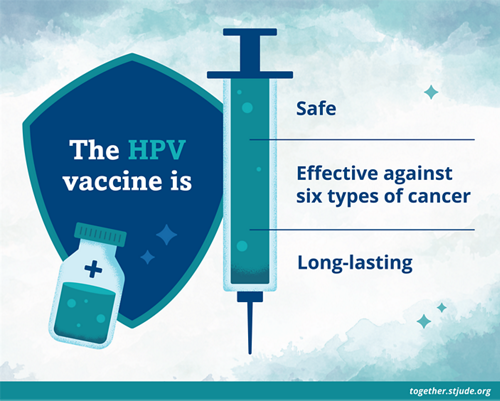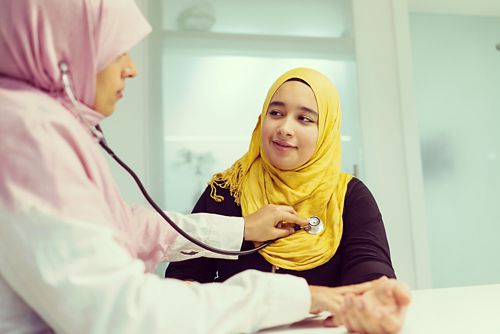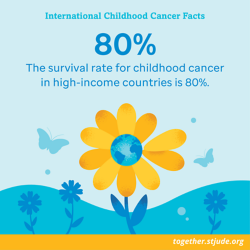HPV: A Virus We All Can Beat
March 4 is International HPV Awareness Day. It is also the day St. Jude Children’s Research Hospital announces our new HPV Cancer Prevention Program.
It is an ideal day to take a moment to learn more about HPV, which stands for human papillomavirus. HPV is a virus we all can beat.
What is HPV?

HPV is a common infection linked to at least six types of cancer:
- Cervical, vaginal, and vulvar cancer in women
- Penile cancer in men
- Anal and throat cancer in men and women
The good news: We have a safe and effective vaccine that protects against almost 90% of these cancers.
The problem: Not enough people get the HPV vaccine.
Not enough people getting the vaccine is a serious issue in the United States. On the worldwide stage, HPV is even more deadly. That is what I want to share with you in this blog article.
HPV causes almost 5% of all cases of cancer. Most of these cases are cervical cancer (cancer of the cervix), which occurs only in women. Cervical cancer is the fourth most common cancer among women globally with about 570,000 new cases each year and 311,000 deaths. About 85% of these new cases of cervical cancer and deaths occur in low-and-middle income countries.
These numbers represent women who are grandmothers, mothers, daughters, sisters, cousins, and friends. Lives lost far too early.
The World Health Organization (WHO) has a bold goal — to eliminate cervical cancer worldwide by 2030. In November, WHO launched a plan to achieve this goal.
WHO identified three main ways to get the job done:
- HPV vaccination
- Cervical cancer screening
- Cervical cancer treatment
The world already has these tools. We need to make sure everyone has access to them, especially in low-and-middle-income countries. We need to put these tools to work.
The WHO plan includes three targets:
- 90% of girls vaccinated by age 15. In the United States, HPV vaccination is routinely recommended for boys and girls ages 11–12. People may get the vaccine as early as age 9 and up to age 26.
- 70% of women screened with a Pap test by age 35 and again by 45 years of age. In the United States, recommendations call for screening every 3–5 years beginning at age 21.
- 90% of women identified with cervical disease receive treatment. In the United States, the National Comprehensive Cancer Network provides guidelines for cervical cancer treatment. The American Society for Colposcopy and Cervical Pathology provides guidance on managing cervical pre-cancer (such as an abnormal Pap test or positive hrHPV test).
Here is what you can do in support of the WHO goal:
- Get vaccinated against HPV if you are in the age range.
- Encourage others to get vaccinated.
- Share the facts: HPV vaccination is safe, effective, and long-lasting. It prevents six types of cancer.

In the new HPV Cancer Prevention Program at St. Jude, we will work with partners to galvanize existing efforts and lead new ones to increase HPV vaccination. We will look at why some groups of people that we serve have worse health outcomes than others and develop ways to improve those outcomes.
We have made progress. We also have a tremendous opportunity to improve HPV vaccination and prevent HPV cancers in even more people. More than 270 million doses of HPV vaccination have been given worldwide, to date. Let’s keep going!
HPV vaccination is cancer prevention. HPV vaccination is safe, effective, and long-lasting – and HPV is a virus we all can beat.





